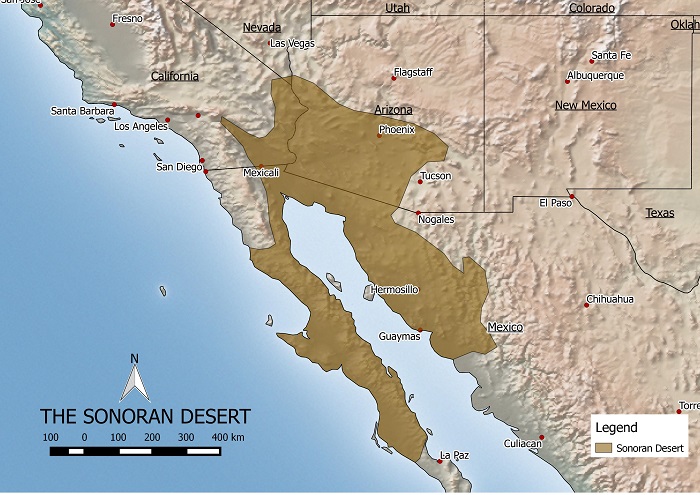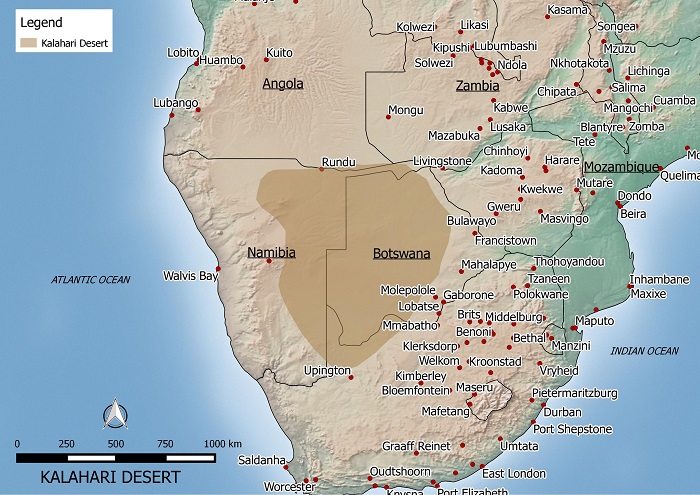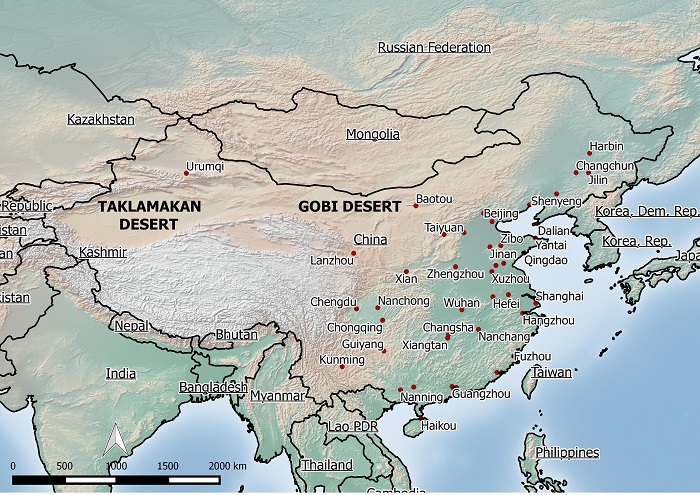The Sonoran desert is one of the largest and hottest deserts in North America. It is about 120,000 square miles in size. Despite the harsh conditions the thriving city of Phoenix is located in this desert. Phoenix has a population of over 4 million and is one of the fastest growing cities in the US. The desert is actually losing ground to the urban sprawl around Phoenix.
The Sonoran desert is home to an assortment of cactus species including the famous saguaro cactus, pictured below, which is found only in the Sonoran. There is also a diverse range of animals including the bobcat, coyote, antelope and various reptile species.

cc photo credit: SearchNetMedia



